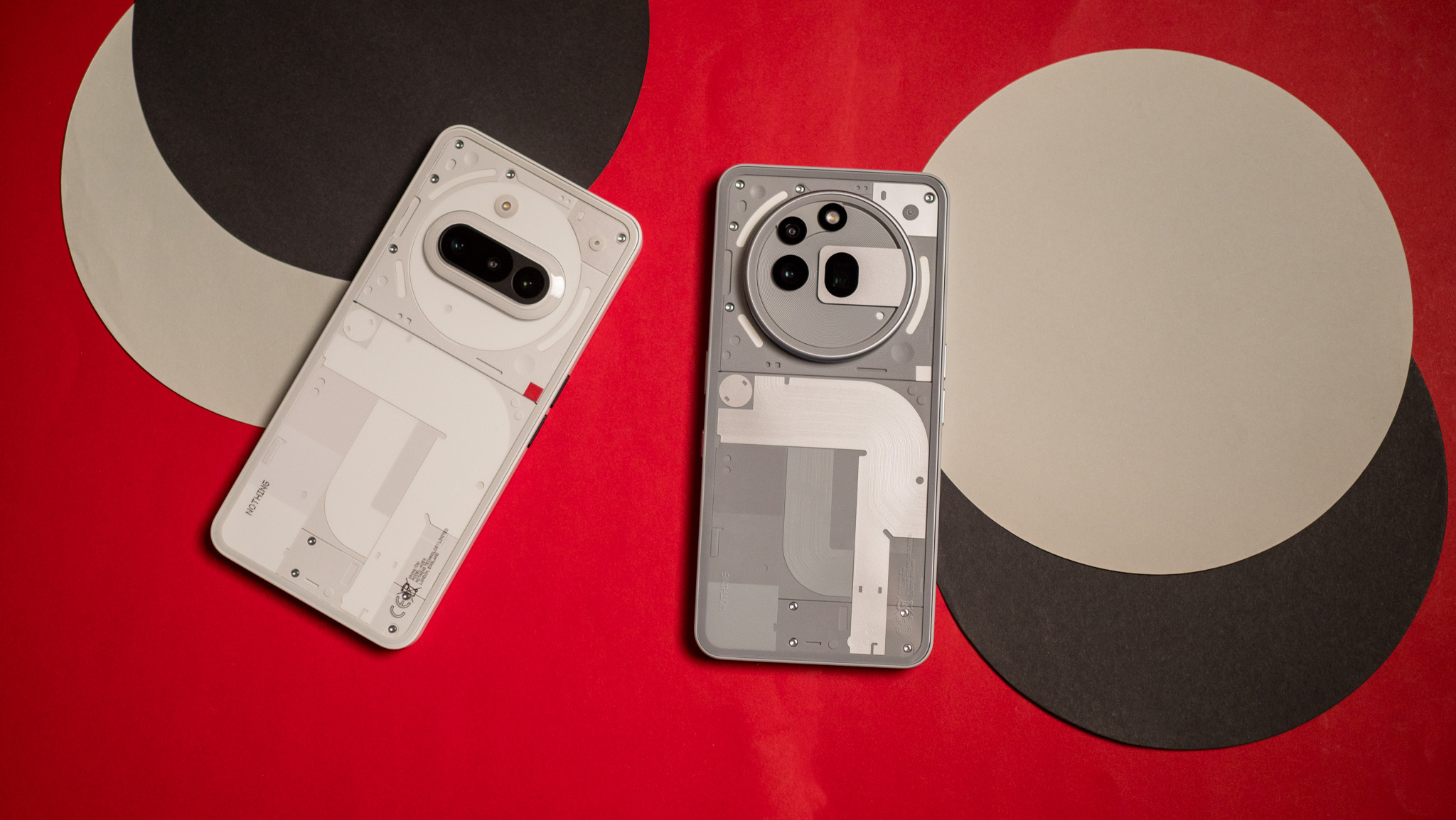Samsung Galaxy S25: Price, specs, and everything you need to know
Samsung is celebrating 15 years of Android with some big new changes in store for the Galaxy S25 series.
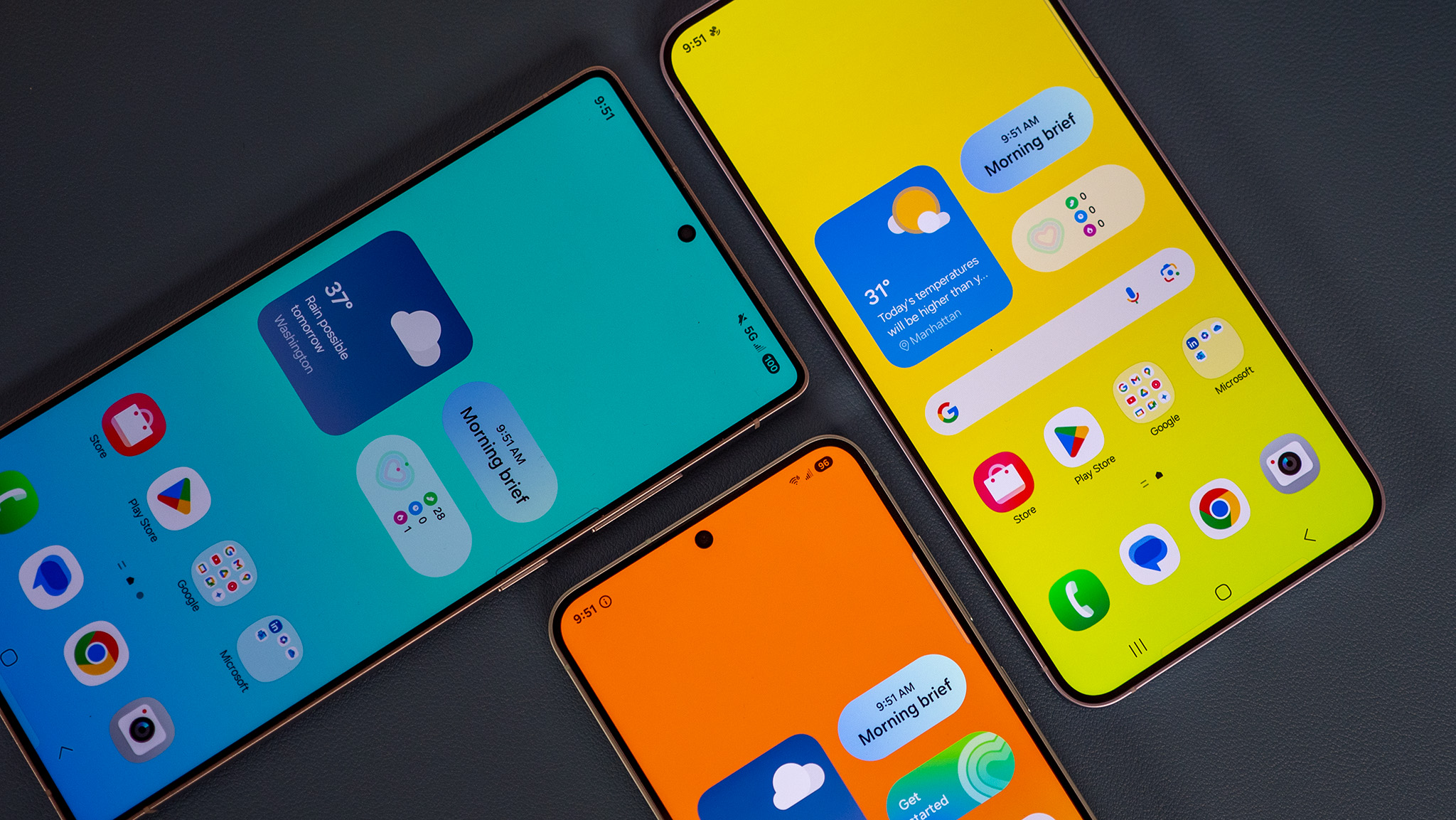
Now that we’ve tried and tested the latest Samsung Galaxy S25 Edge, it’s safe to say the company’s Galaxy S lineup for 2025 is complete. The current selection of Samsung flagships now includes the base Galaxy S25, the midsized Galaxy S25 Plus, the thin Galaxy S25 Edge, and the giant Galaxy S25 Ultra. Each one has its own target audience, even if the Edge's is as slim as its form factor. But which is right for you?
Samsung's Galaxy S25 lineup gave us our first taste of One UI 7, and it's now getting even better with updates post-launch. Amidst the shaky rollout, it's clear that a key perk of buying a Galaxy S25 early is getting access to Samsung's fresh software and new AI tools. That includes multimodal Gemini Live, which is free for Galaxy S25 owners.
On top of that, it's the 15th year of Samsung making Android phones, so the Galaxy S25 represents a big milestone for the South Korean company. By this point, you're probably wondering whether this pricey smartphones are worth it.
After spending time with each of the phones, we'll take you through all of the key details that you need to know about the Galaxy S25 lineup. You can also read about our thoughts and recommendations about whether they're worth your money in our reviews of the Galaxy S25, Galaxy S25 Plus, Galaxy S25 Edge, and Galaxy S25 Ultra.
Samsung Galaxy S25: Price and availability
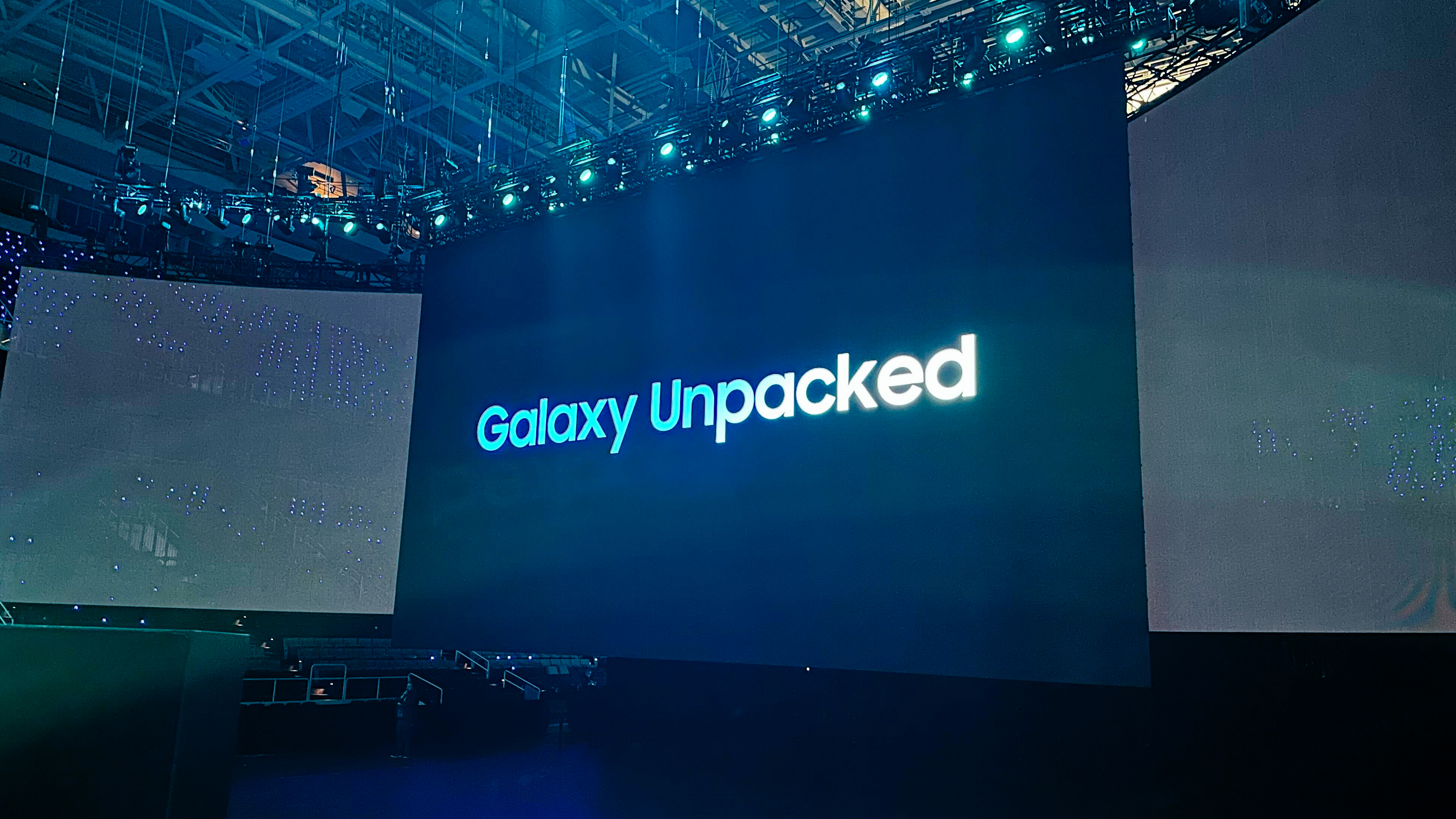
Samsung officially announced the Galaxy S25 series of devices at Galaxy Unpacked on Jan. 22, 2025, and are officially on sale as of Feb. 7.
There are three models to choose from, with the Galaxy S25 starting at $799 with 128GB of storage. From there, the Galaxy S25 Plus with 256GB of storage starts at $999, and the Galaxy S25 Ultra comes in at $1,299.
All three models have a variety of different colors to choose from, some of which are only available when ordering directly from Samsung.
Get the latest news from Android Central, your trusted companion in the world of Android
The lineup gained a new member on May 13, 2025 when Samsung announced the Galaxy S25 Edge. It starts at $1,099 and is now publicly available as of May 30, and you can buy it now in three colorways.
Samsung Galaxy S25: Design and displays
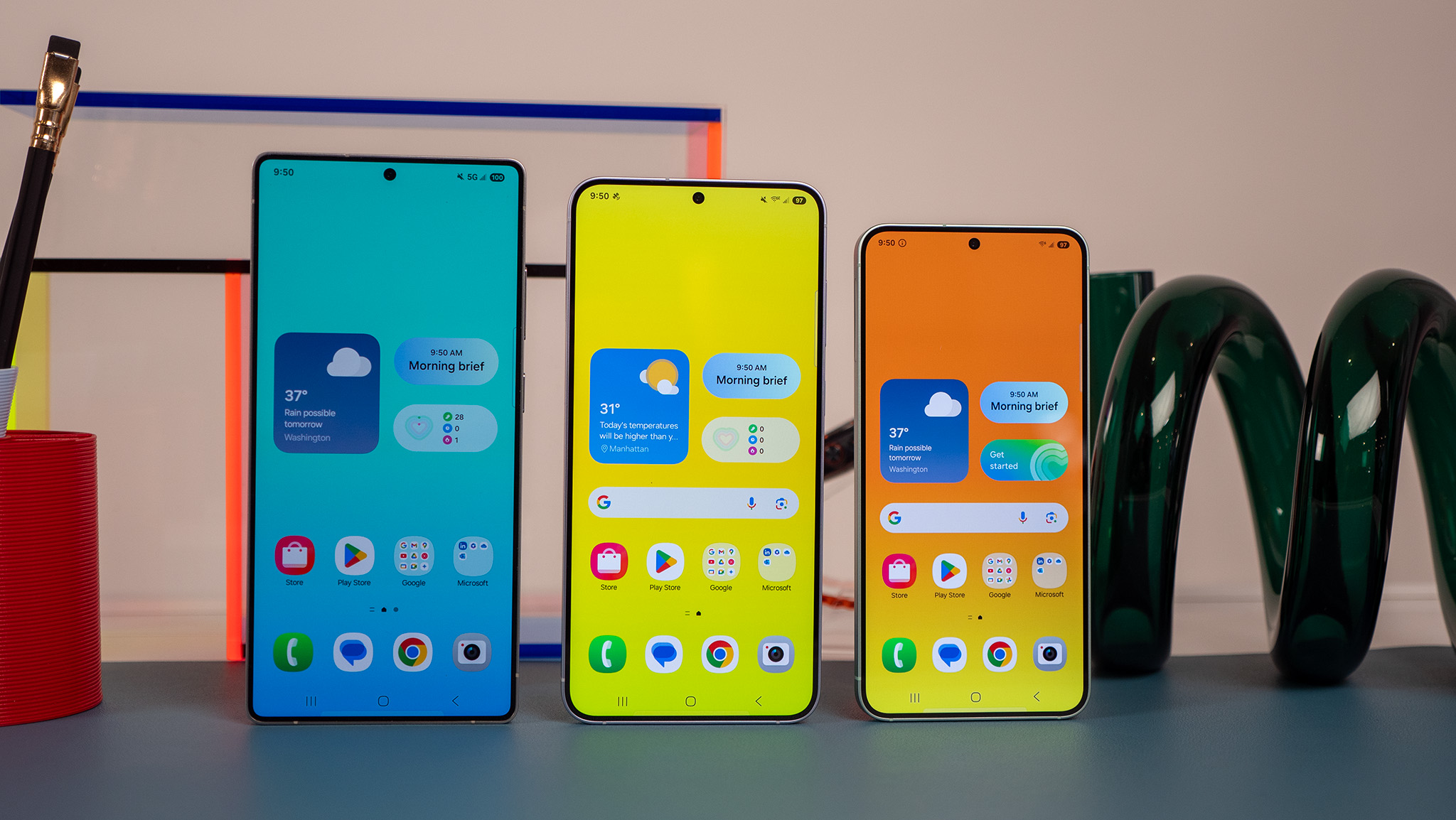
For the first time in a few years, all three Galaxy S25 models look like they belong to the same family of devices. This is largely due to Samsung bringing its flattened edges and rounded curves to the Galaxy S25 Ultra, a design choice that was made for the lower-end models with the Galaxy S24 launch.
With that, the smallest Galaxy S25 sports a 6.3-inch AMOLED display with an FHD+ resolution and a 120Hz Adaptive refresh rate. Stepping up a notch is the Galaxy S25 Plus with its 6.7-inch screen, offering a QHD+ resolution and the same 120Hz refresh rate. Rounding out the trio is the Galaxy S25 Ultra, which is actually 0.1-inch larger than its predecessor, now featuring a 6.9-inch AMOLED screen.
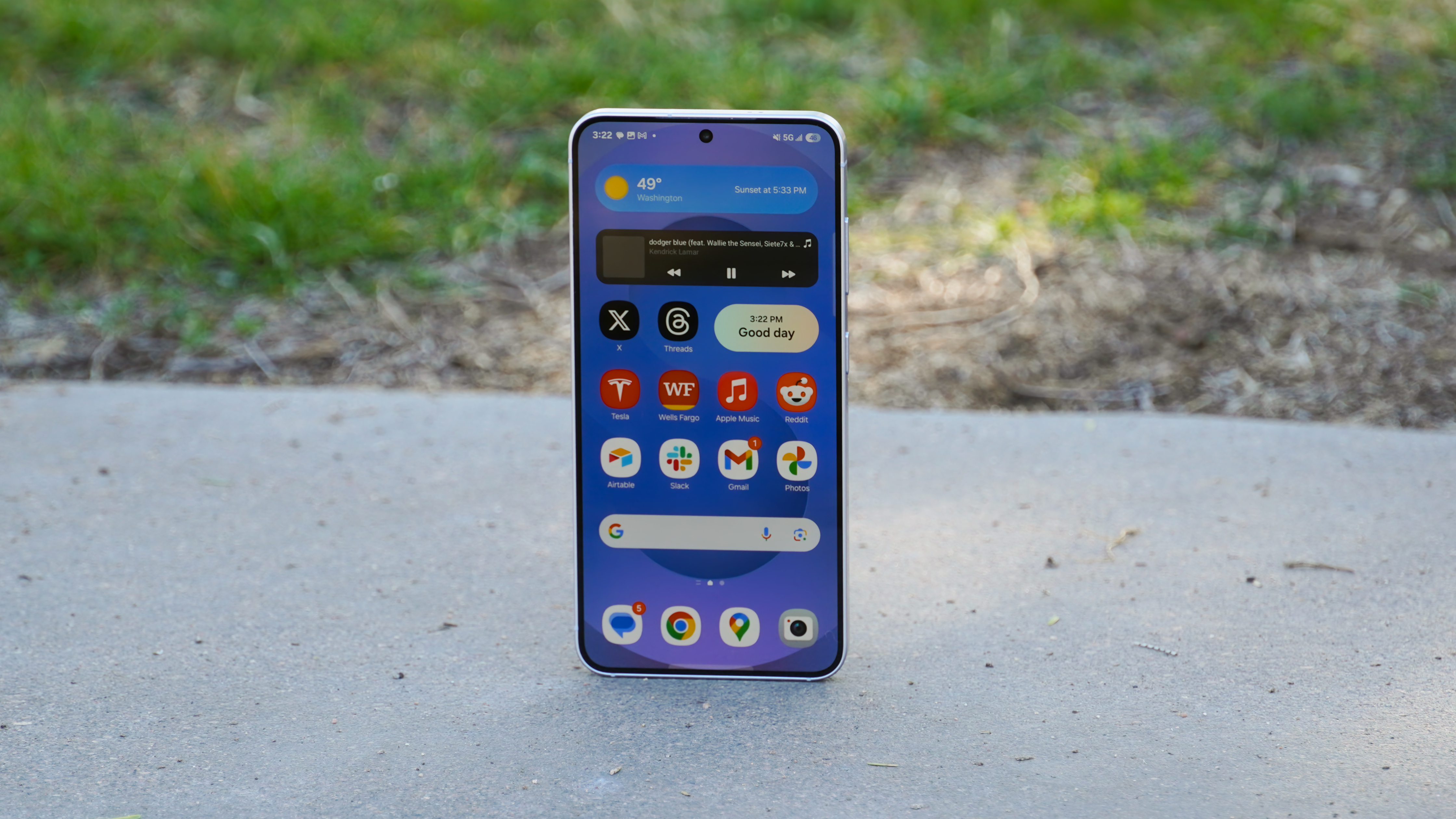
Something worth noting is that with the Galaxy S25 series, the company has introduced its "ProScaler" technology. Originally found in Samsung TVs, this will upscale the resolution of whatever it is that you're watching in order to provide the best viewing experience possible.
In terms of durability, both the Galaxy S25 and S25 Plus include an Armor Aluminum frame while utilizing Gorilla Glass Victus 2 for the screen. And just to cover all of the bases, an IP68 water and dust resistance rating is found across all three devices. As for the Galaxy S25 Ultra, Samsung is sticking with Titanium for the frame, while the glass is being upgraded to Corning's Gorilla Armor 2.
Samsung Galaxy S25: Cameras
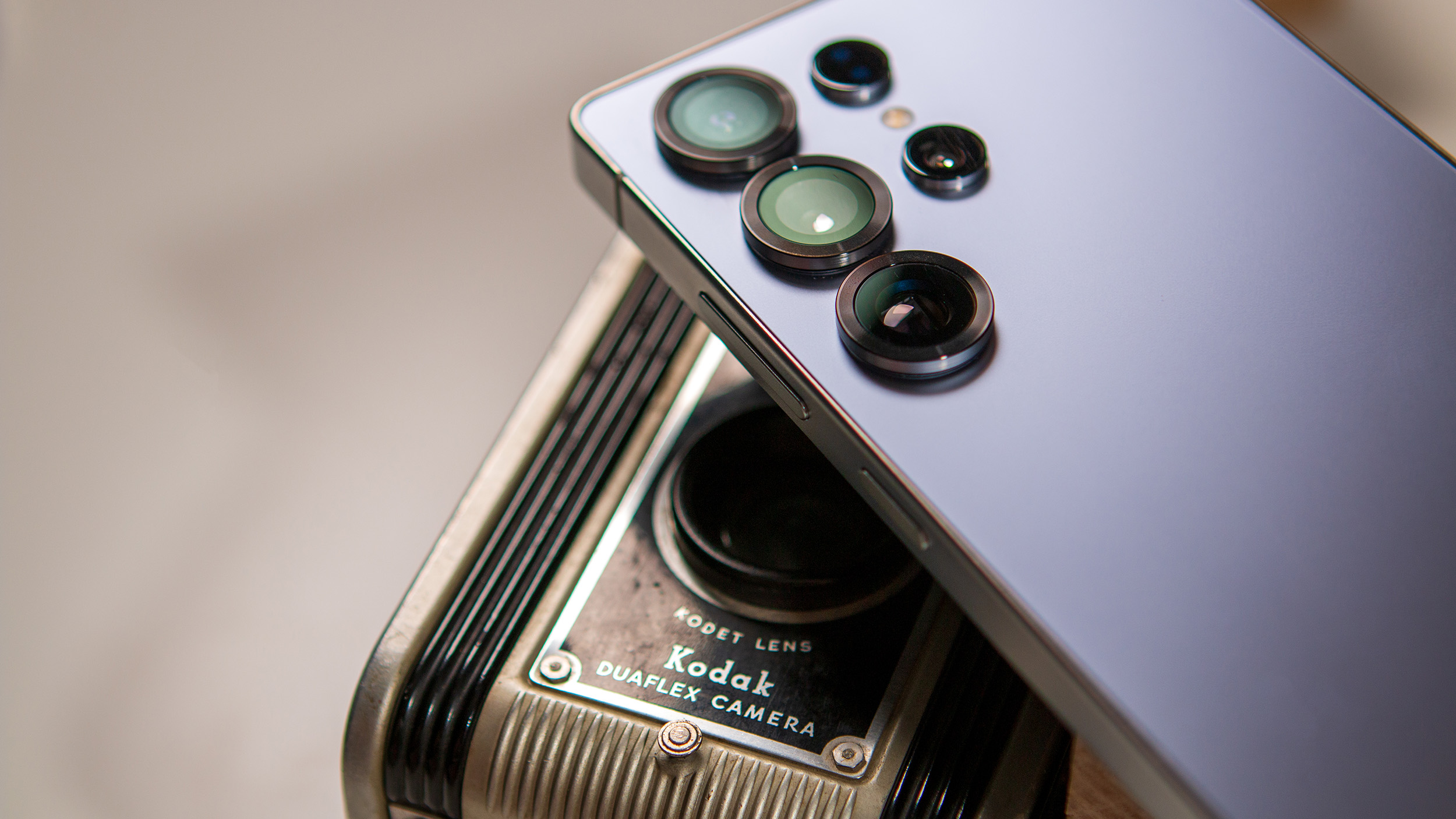
In keeping with the trend, Samsung didn't introduce any changes to the camera hardware on either the S25 or S25 Plus. Instead, Samsung is leaning on the software to provide improvements, as these phones are equipped with "Galaxy's next-gen ProVisual Engine." Essentially, this aims to improve the quality of your pictures and videos, regardless of what time of the day you're capturing moments.
The Galaxy S25 Ultra retains its four-camera layout on the back of the phone, but there is one change that was made. Three of the four sensors remain the same, with the 200MP wide-angle, 10MP 3x telephoto, and 50MP 5x telephoto lenses. With the Ultra, Samsung upgraded the ultrawide lens from a 12MP sensor to a new 50MP one.
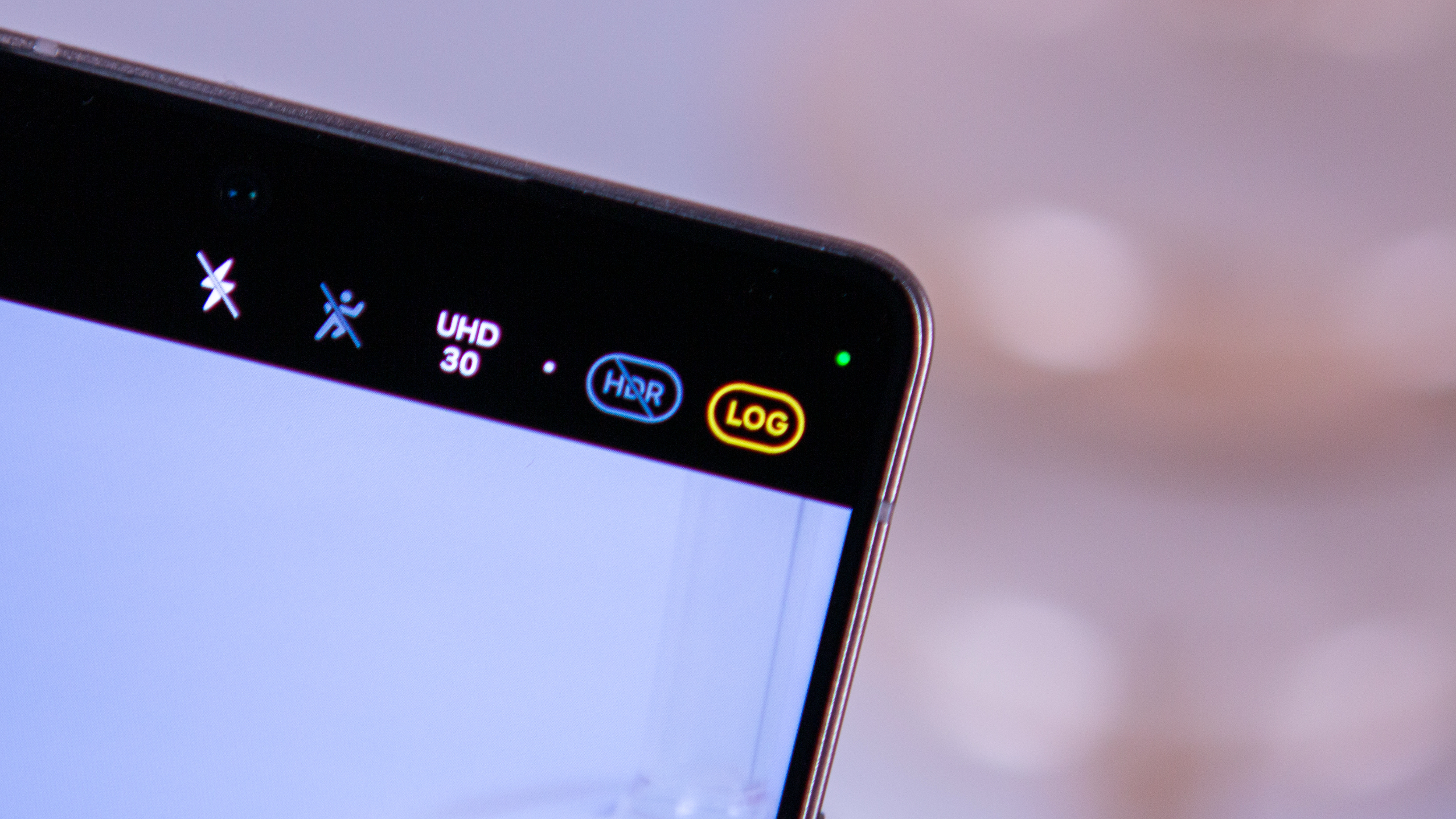
In doing so, you can capture 50MP ultrawide or macro shots that are pixel-binned to 12MP, providing even more detail. At the same time, this new sensor should also provide better flexibility when taking pictures or recording video.
Samsung continues to attempt to push the limits of mobile photography, which was rather evident during the Galaxy Unpacked unveiling. In addition to the upgraded camera sensor, Samsung is also introducing a couple of new features starting with Virtual Aperture. This is available within the Expert RAW app, giving you more control over the depth-of-field in your images.
Keeping with the trend of professional camera tools, the Galaxy S25 also now offers the ability to record video in "Galaxy Log." Now you can really feel like a professional, as Log videos offer "precise color grading options," similar to taking photos in the RAW format.
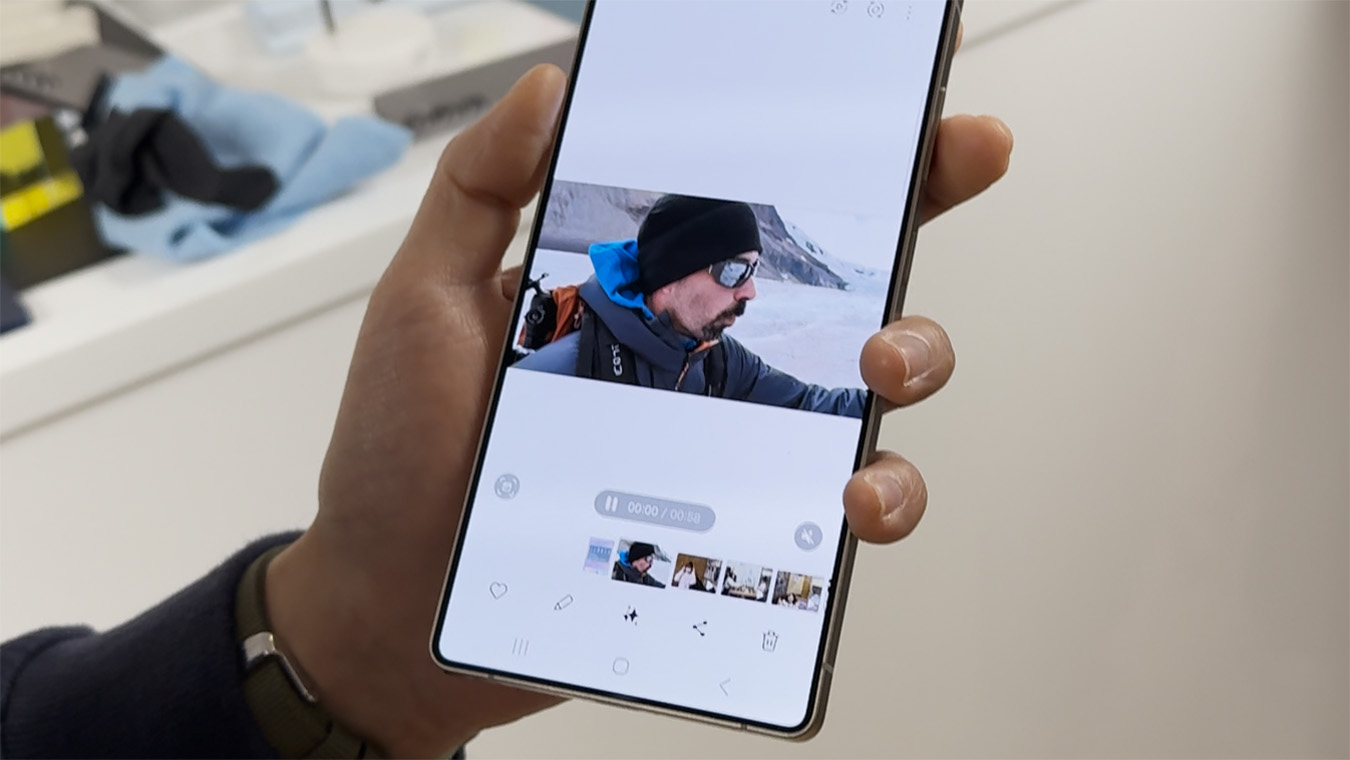
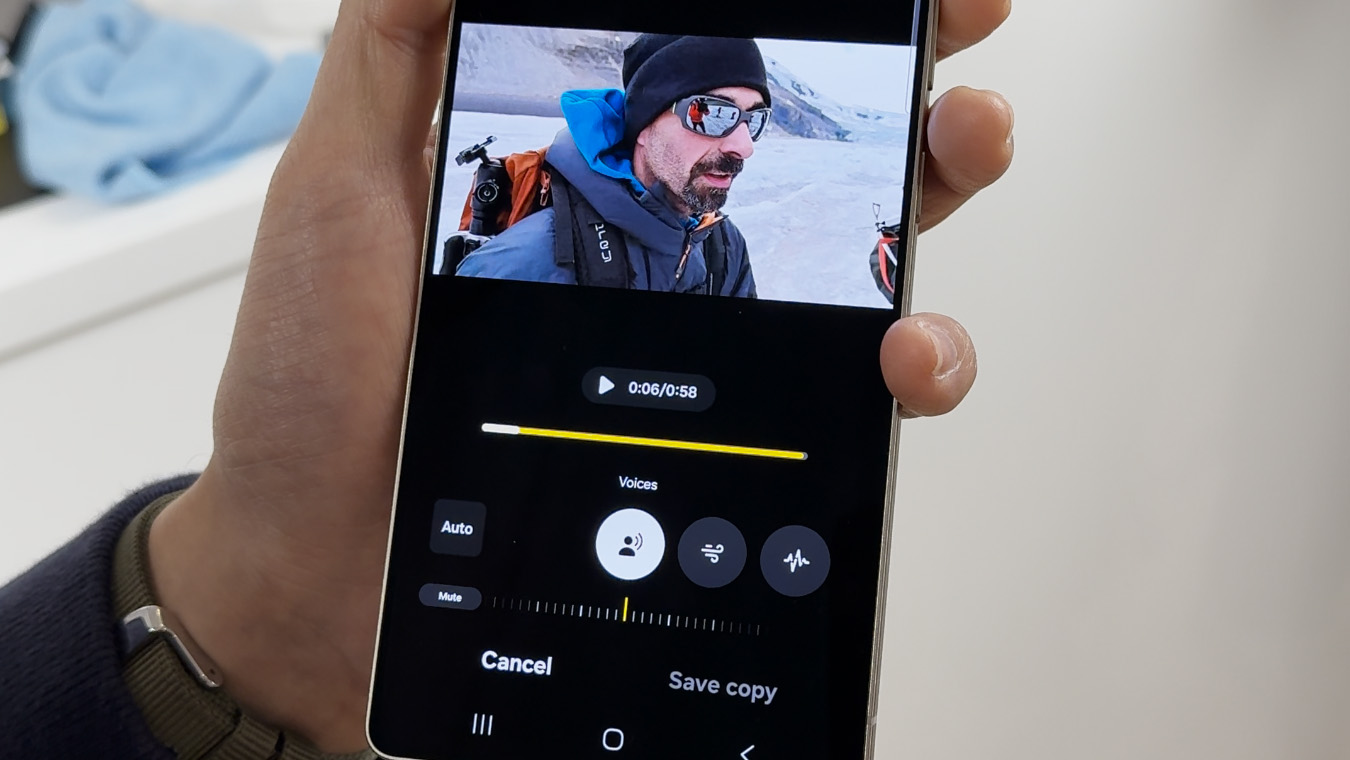
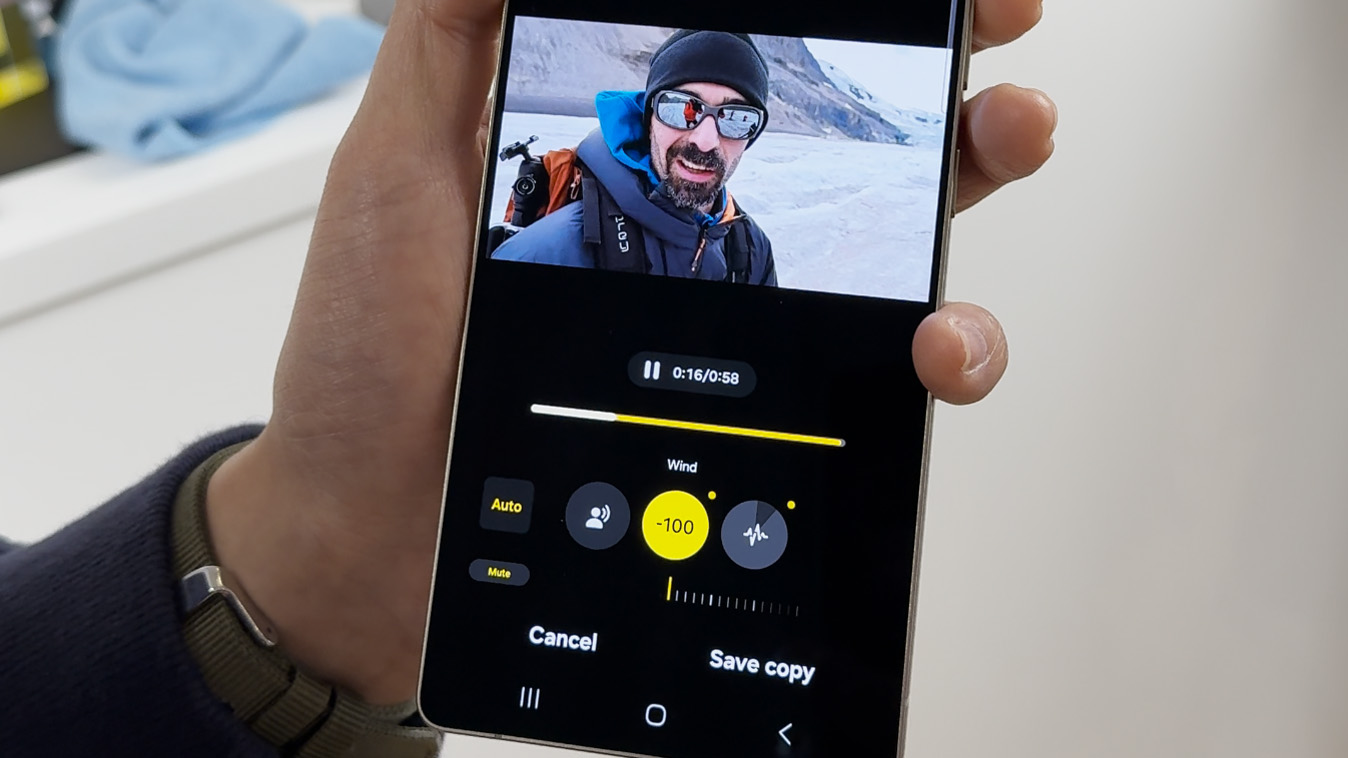

At the same time, the Galaxy S25 is also now equipped with a variety of improvements for pictures, and you don't need to be a "pro" to use them. One particularly exciting addition is the ability to create your own filters for images, that can be saved and re-used on different pictures. Plus, Samsung is including an updated array of filters, giving you a starting point if you want to make any additional tweaks.
The last major camera-related feature debuting on the Galaxy S25 is Audio Eraser. It's similar to the Audio Magic Eraser feature that debuted on the Pixel 8, utilizing AI to analyze the audio from a video. Once complete, you can then adjust six different sliders, letting you clean up the audio so you can actually hear the person if you recorded the video and there was a bunch of extra background noise.
Samsung Galaxy S25: AI & Software
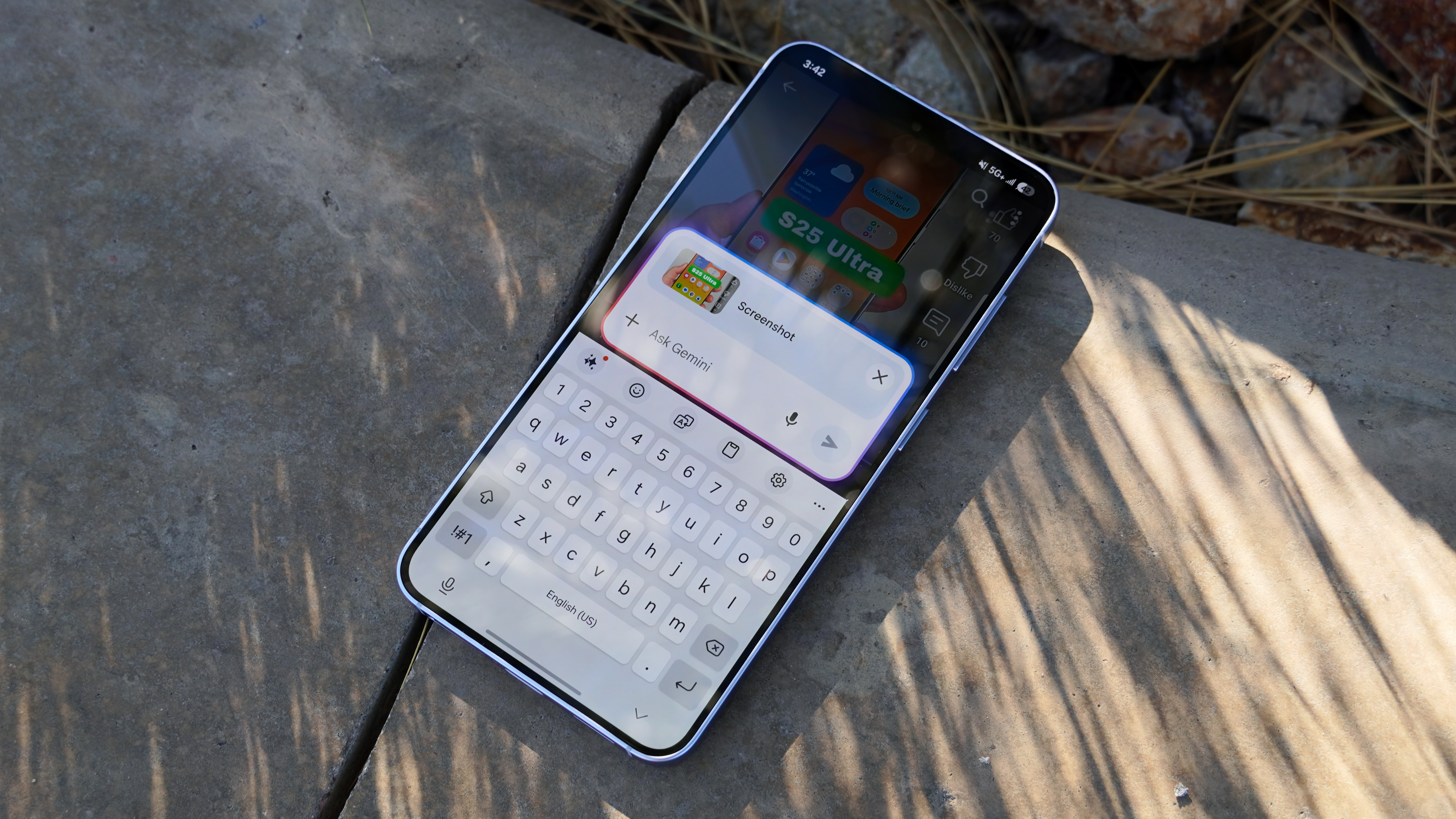
Seeing as there simply weren't very many changes made to the Galaxy S25 hardware, much of Galaxy Unpacked was focused on software. From the start, Galaxy AI was front and center, and Gemini is expected to play an impactful role in how you use AI on the S25 series.
Because Samsung worked with Qualcomm to develop the Snapdragon 8 Elite for Galaxy, this allows for more AI features to be handled on-device. One example is Generative Edit, which has been available on previous Galaxy devices, but relied on the cloud in order to be used.
Samsung is touting the Galaxy S25 series as being a "true AI companion," and it doesn't take long to understand why. Features that we've already had are being upgraded, such as Circle to Search, which can now recognize things like a URL and take you to the website with a tap.
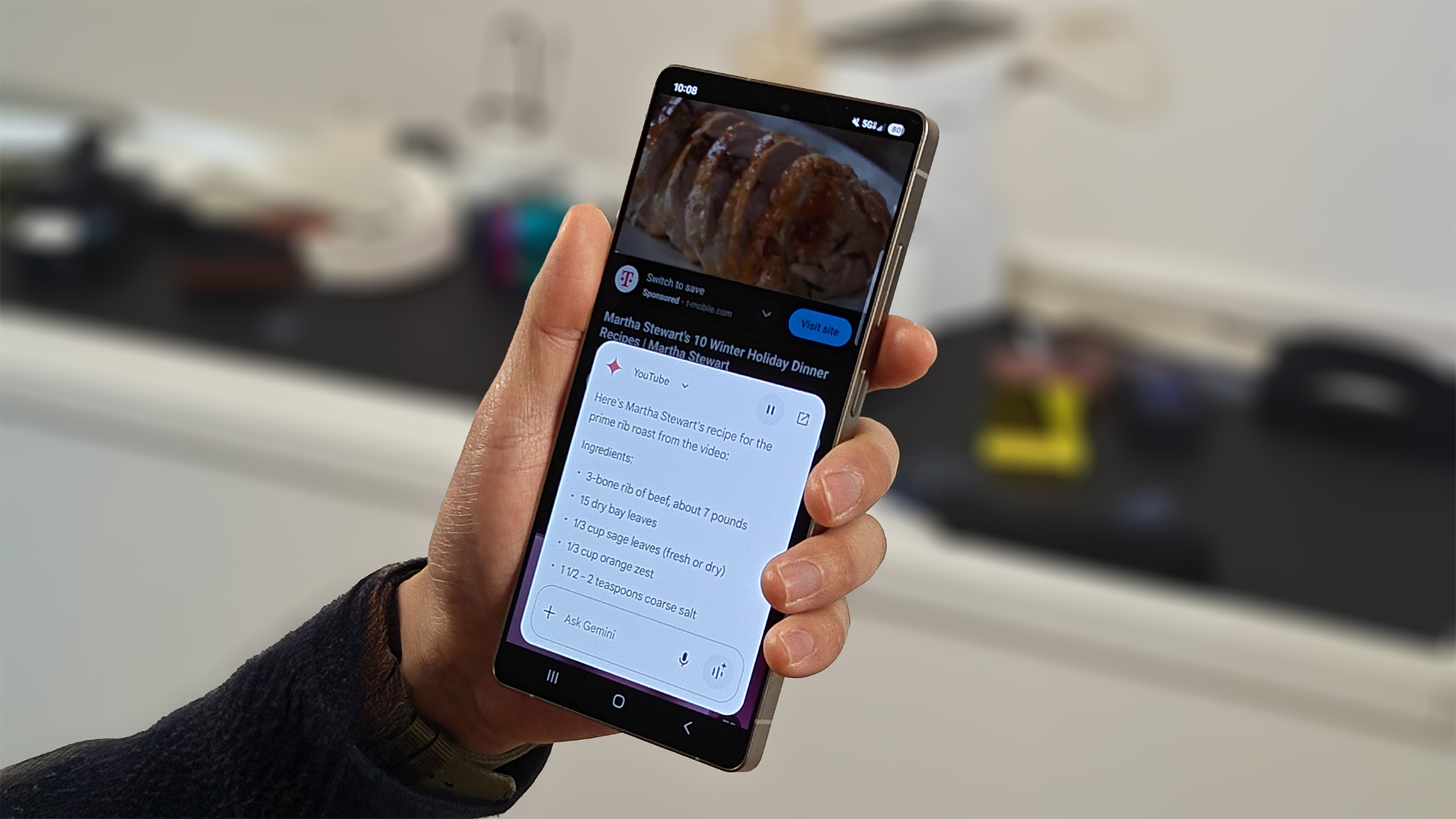
We were also introduced to a brand new interface that appears whenever you interact with Google Gemini. In fact, you'll be able to long-press and activate Gemini using the Side Button right out of the box. Previously, this gesture was mapped to Bixby and used to require some rather annoying steps to get around.
In an effort to truly make the Galaxy S25 as personal as possible, a lot of focus was put on making it easy to use natural language when interacting with your phone. Not only that but with Gemini and Galaxy AI, you can make several related requests and let your phone do everything.
For example, you can ask Gemini something like, "Find the best pizza places near me, and send the list to Joe." The Galaxy S25 will understand the requests and perform each task before presenting a drafted text message for any potential edits.
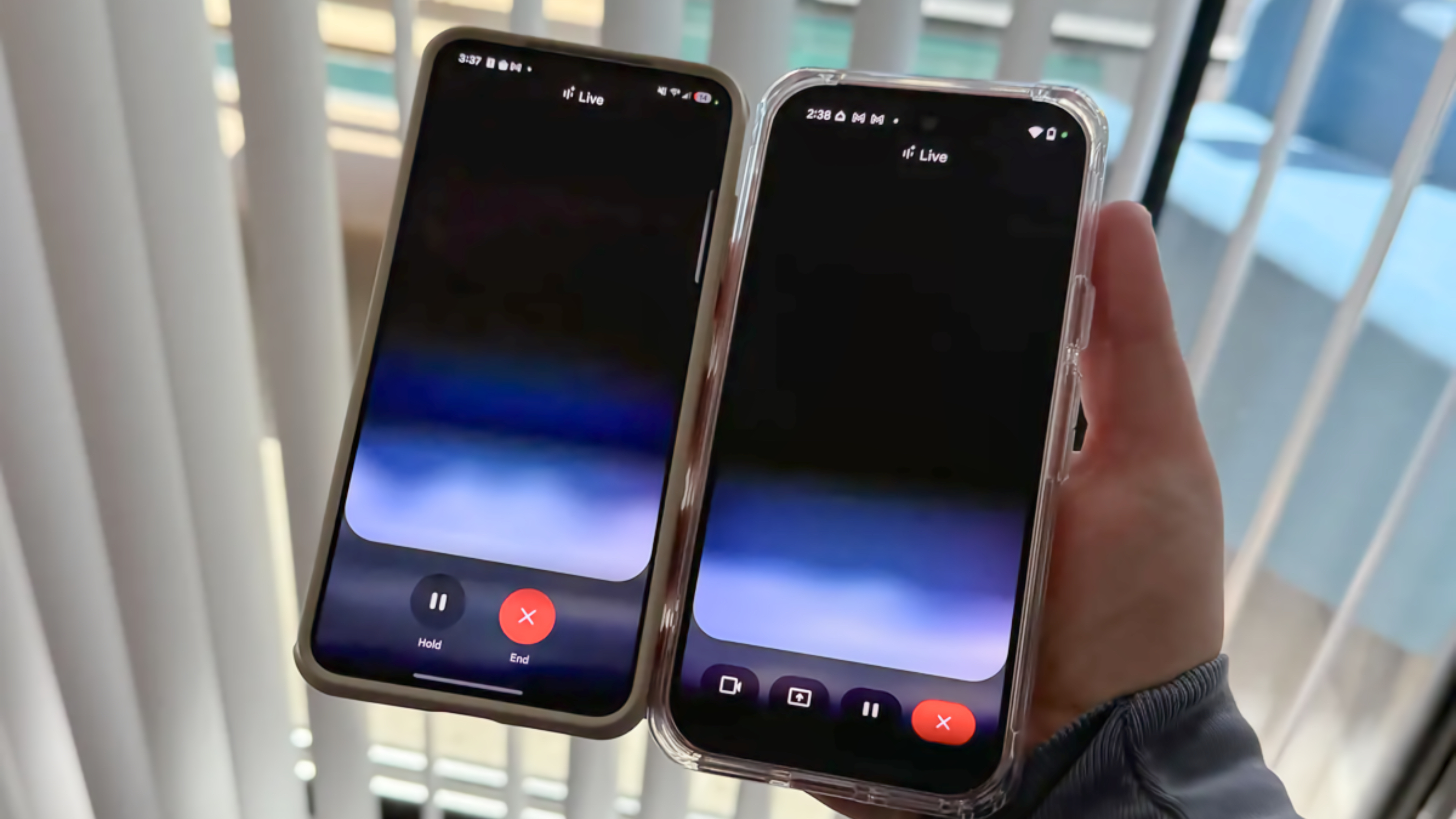
That's not the only impressive new AI-powered feature to come with the Galaxy S25, as Now Brief is available. Updated throughout the day, Now Brief is basically an AI-powered dashboard that lets you know of upcoming calendar events, shows you the weather, and more. Plus, there's also the Now Bar, which appears at the bottom of your Lock Screen, showing you suggestions and live notifications.
We already knew this to be the case ahead of Unpacked, but the Galaxy S25 series is the first Samsung devices with One UI 7 onboard. Post-launch, the entire Galaxy S25 series became one of the first phones to get free Gemini Live with video streaming and screen sharing support.
For the first time, Samsung's Good Lock launcher and customization app is now available for download via the Google Play Store. Previously, it was a Galaxy Store exclusive.
Samsung Galaxy S25: Specs and performance
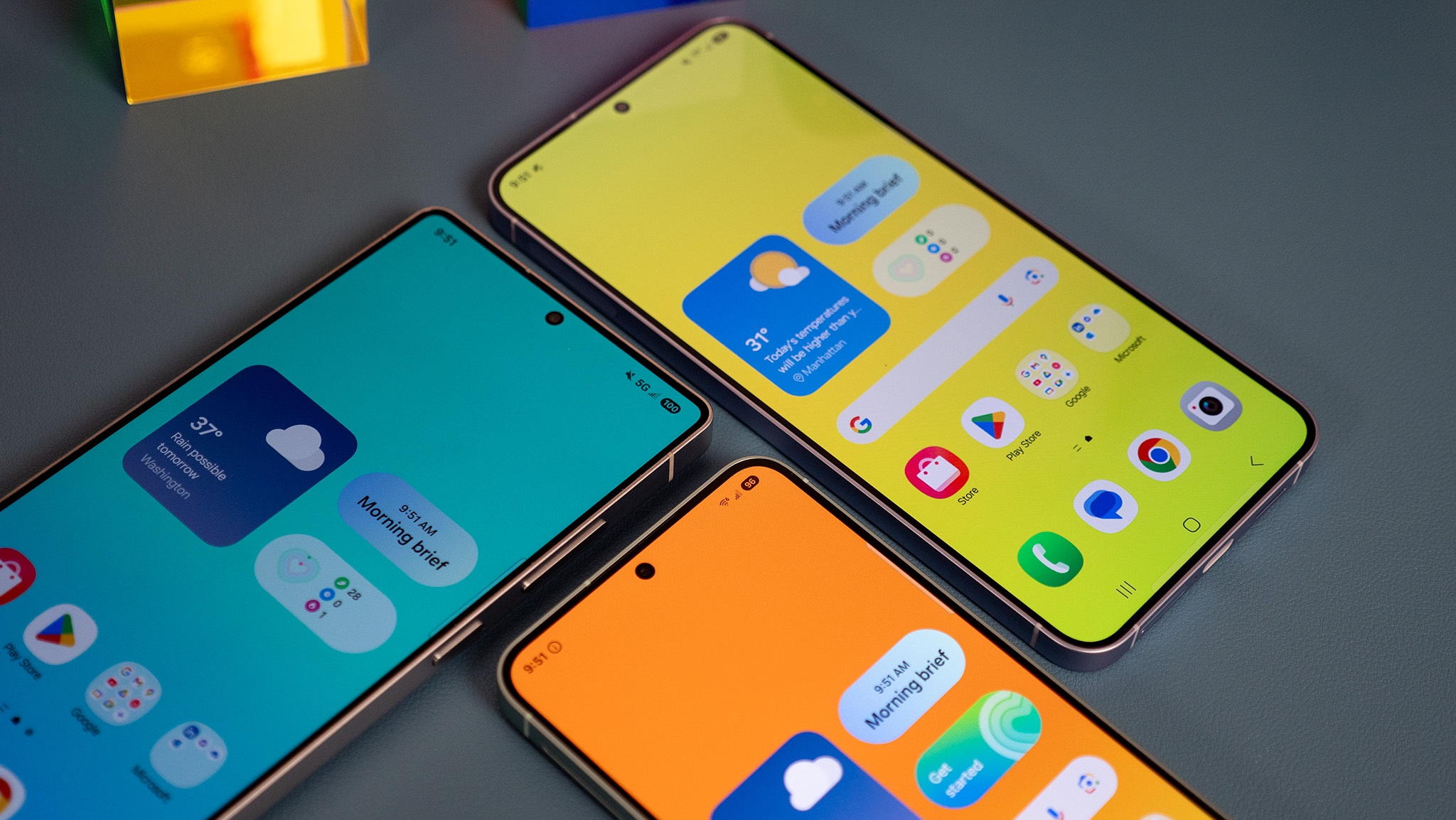
Another first for Samsung's Galaxy S25 lineup is that many of the same internals are being used across the board. It all starts with the Snapdragon 8 Elite for Galaxy, which Samsung claims provides a "performance boost of 40% in NPU, 37% in CPU, and 30% in GPU compared to the previous generation."
Samsung and Qualcomm also announced that they developed this specialized chip together, as opposed to the SoC simply being overclocked. This gives Samsung more control when it comes to introducing features that can take full advantage of the chip without compromise.
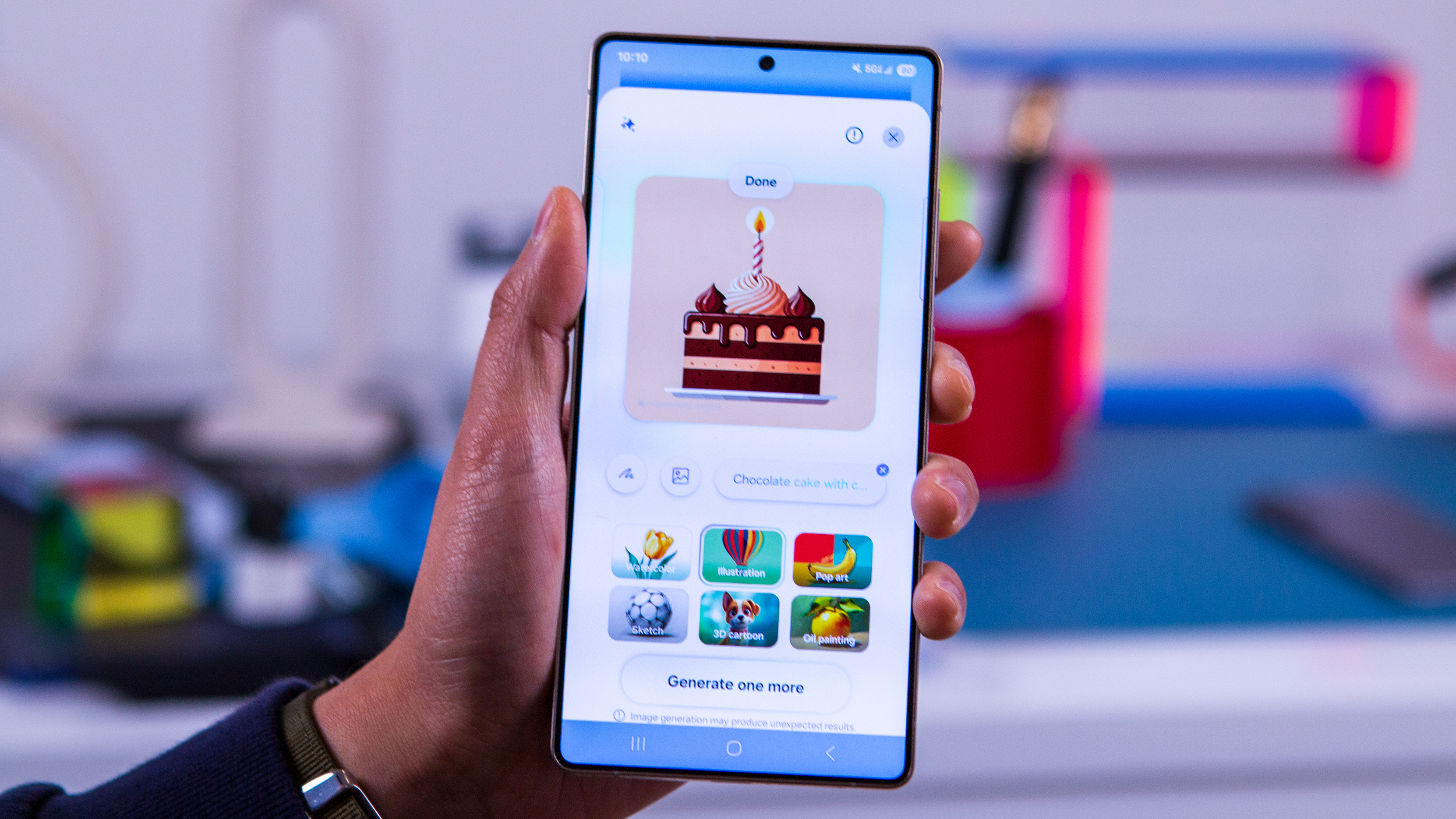
The improvements don't stop there, as the Galaxy S25 series features a larger vapor chamber, sometimes as much as 40% larger. This, paired with the custom-designed thermal interface material (TiM,) Samsung is hopeful that this will result in better-sustained performance without sacrificing battery life.
We expected the Galaxy S25 Ultra to be packed with plenty of RAM, and that's exactly what Samsung did. However, what we didn't expect was for the Galaxy S25 and S25 Plus to match up, with all three phones now sporting the same 12GB of RAM.
Storage capacity is a different story, however, as the Galaxy S25 is only available with 128GB or 256GB of storage. The Galaxy S25 Plus offers either 256GB or 512GB, and the S25 Ultra can be configured with up to 1TB of storage.

One area where you find much of a change is battery life, as Samsung is utilizing the same sized batteries as the S24 series. This means that we have a 4,000mAh battery in the standard S25, the S25 Plus includes a 4,900mAh cell, and the S25 Ultra sports a 5,000mAh battery. That being said, Samsung did claim that we should expect up to 31 hours of video playback on the Ultra, the longest ever for a Galaxy phone.
When it comes to charging speeds, Samsung isn't changing anything, as both the S25 peaks at 25W, with the S25 Plus and Ultra maxing out at 45W. And if you were hoping that this would be the perfect time for Samsung to fully adopt Qi2, you might be disappointed.
Interestingly, some users are reporting having issues charging reliably at expected speeds using the official USB-C cable included with the Galaxy S25. If you think you might be having this problem, you can learn more about the issue affecting Galaxy S25 owners here.
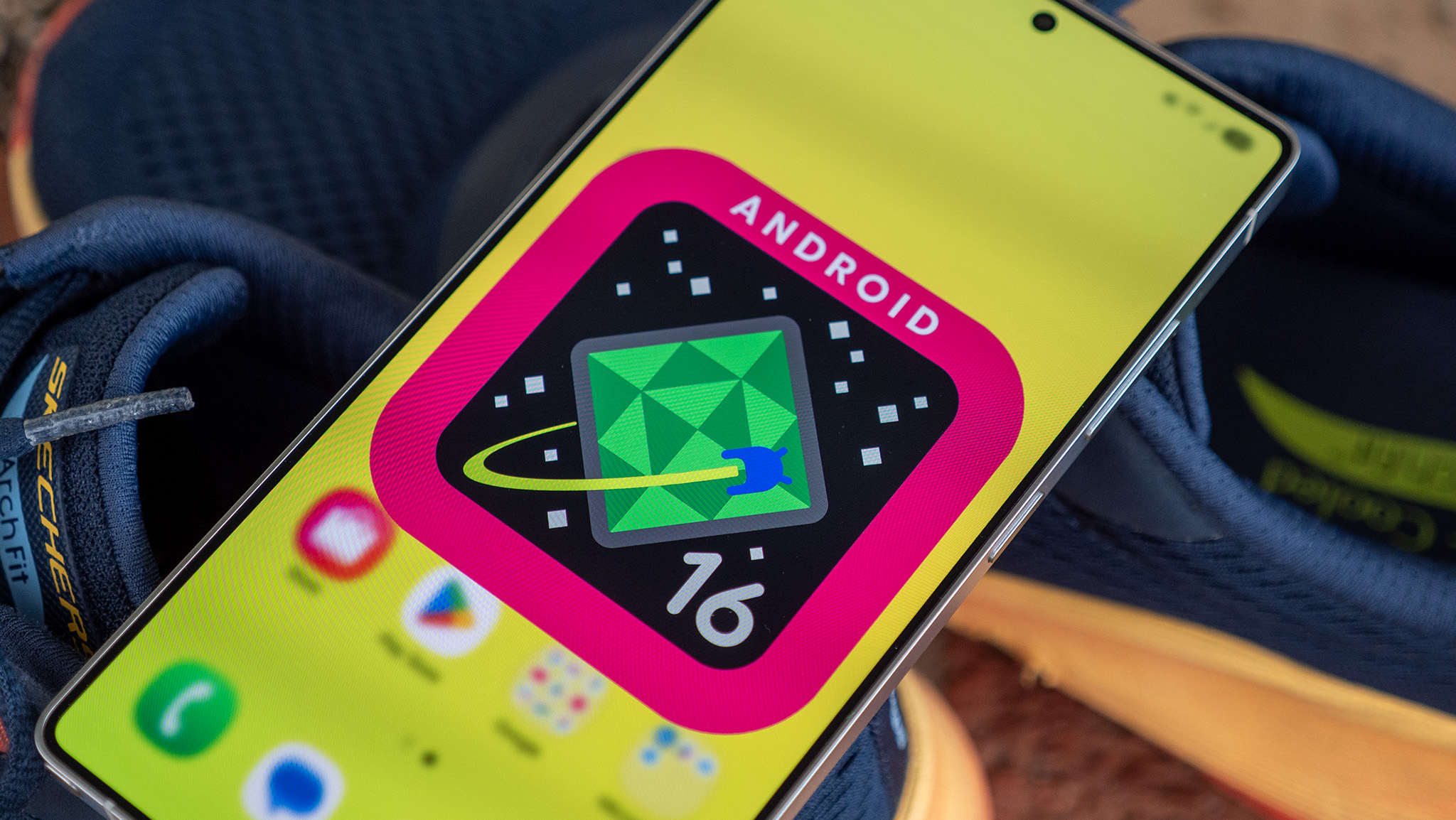
The Samsung Galaxy S25 includes the hardware for satellite messaging, but Samsung opted to let cellular carriers provide the feature to users. A few major cellular carriers in the U.S. recently announced plans to do just that. Verizon is offering satellite texting to Galaxy S25 owners starting now, and Xfinity and Spectrum Mobile will follow suit in the coming weeks.
Category | Samsung Galaxy S25 | Samsung Galaxy S25 Plus | Samsung Galaxy S25 Edge | Samsung Galaxy S25 Ultra |
|---|---|---|---|---|
Display | 6.2-inch FHD+ Dynamic AMOLED 2X, 120Hz | 6.7-inch QHD+ Dynamic AMOLED 2X, 120Hz | 6.7-inch QHD+ Dynamic AMOLED 2X, 120Hz | 6.9-inch QHD+ Dynamic AMOLED 2X, 120Hz |
Processor | Qualcomm Snapdragon 8 Elite for Galaxy | Qualcomm Snapdragon 8 Elite for Galaxy | Qualcomm Snapdragon 8 Elite for Galaxy | Qualcomm Snapdragon 8 Elite for Galaxy |
Memory | 12GB | 12GB | 12GB | 12GB |
Storage | 128GB, 256GB | 256GB, 512GB | 256GB, 512GB | 256GB, 512GB, 1TB |
Front Camera | 12MP, f/2.2 | 12MP, f/2.2 | 12MP, f/2.2 | 12MP, f/2.2 |
Rear Camera 1 | 50MP (wide), OIS F1.8, FOV 85˚ | 50MP (wide), OIS F1.8, FOV 85˚ | 200MP (wide), OIS, f/1.7, FOV 85˚ | 200MP (wide), OIS, f/1.7, FOV 85˚ |
Rear Camera 2 | 12MP (ultrawide), f/2.2, FOV 120˚ | 12MP (ultrawide), f/2.2, FOV 120˚ | 12MP (ultrawide), f/2.2, FOV 120˚ | 50MP (ultrawide) f/1.9, FOV 120˚ |
Rear Camera 3 | 10MP (telephoto), 3x Optical Zoom, f/2.4 | 10MP (telephoto), 3x Optical Zoom, f/2.4 | — | 10MP (telephoto), OIS, f/2.4, 3x Optical Zoom, FOV 36˚ |
Rear Camera 4 | — | — | — | 50MP (telephoto), OIS, f/3.4, 5x Optical Zoom, FOV 22˚ |
Battery | 4,000 mAh | 4,900 mAh | 3,900mAh | 5,000 mAh |
Charging | 25W (wired), 15W (Qi wireless), 4.5W (reverse wireless) | 45W (wired), 15W (Qi wireless), 4.5W (reverse wireless) | 25W (wired), 15W (Qi wireless), 4.5W (reverse wireless) | 45W (wired), 15W (Qi wireless), 4.5W (reverse wireless) |
Connectivity | 5G, LTE, Wi-Fi 7, Wi-Fi Direct, Bluetooth 5.4 | 5G, LTE, Wi-Fi 7, Wi-Fi Direct, Bluetooth 5.4 | 5G, LTE, Wi-Fi 7, Wi-Fi Direct, Bluetooth 5.4 | 5G, LTE, Wi-Fi 7, Wi-Fi Direct, Bluetooth 5.4 |
Biometrics | Ultrasonic Fingerprint Scanner, Face Recognition | Ultrasonic Fingerprint Scanner, Face Recognition | Ultrasonic Fingerprint Scanner, Face Recognition | Ultrasonic Fingerprint Scanner, Face Recognition |
Ingress Protection | IP68, Corning Gorilla Glass Victus 2 (front glass), Corning Gorilla Glass Victus 2 (rear glass), Aluminum | IP68, Corning Gorilla Glass Victus 2 (front glass), Corning Gorilla Glass Victus 2 (rear glass), Aluminum | IP68, Corning Gorilla Glass Victus 2 (front glass), Corning Gorilla Glass Victus 2 (rear glass), Aluminum | IP68, Corning Gorilla Armor (front glass), Corning Gorilla Glass Victus 2 (rear glass), Titanium |
Dimensions | 146.9 x 70.5 x 7.2mm | 158.4 x 75.8 x 7.3mm | 158.2 x 75.6 x 5.8 mm | 162.8 x 77.6 x 8.2mm |
Weight | 162 grams | 190 grams | 163 grams | 218 grams |
Software | One UI 7 w/Android 15 | One UI 7 w/Android 15 | One UI 7 w/Android 15 | One UI 7 w/Android 15 |
Colors | Icyblue, Navy, Mint, Silver Shadow, Pink Gold, Coral Red, Blue Black | Icyblue, Navy, Mint, Silver Shadow, Pink Gold, Coral Red, Blue Black | Titanium Icyblue, Titanium Silver, Titanium Jetblack | Silver Blue, Black, White Silver, Gray, Jade Green, Jet Black, Pink Gold |
These phones officially support the Qi2 wireless charging standard, and are Qi2.1 certified. However, if you are looking forward to enjoying the world of MagSafe accessories, you'll need magnetic cases. These don't add magnets to the phones, but they allow the phones to charge on Qi2 wireless chargers with the "snap" connection.
Samsung is currently rolling out the April 2025 security update to Galaxy S25 owners in select regions, so be sure to install the patch to get the latest fixes for your device.
The One UI 8 beta program is now available for the Galaxy S25, Galaxy S25 Plus, and Galaxy S25 Ultra. Notably, the Galaxy S25 Edge is excluded. You can learn more about the One UI 8 beta here, and how to install it here.
Samsung Galaxy S25 Edge
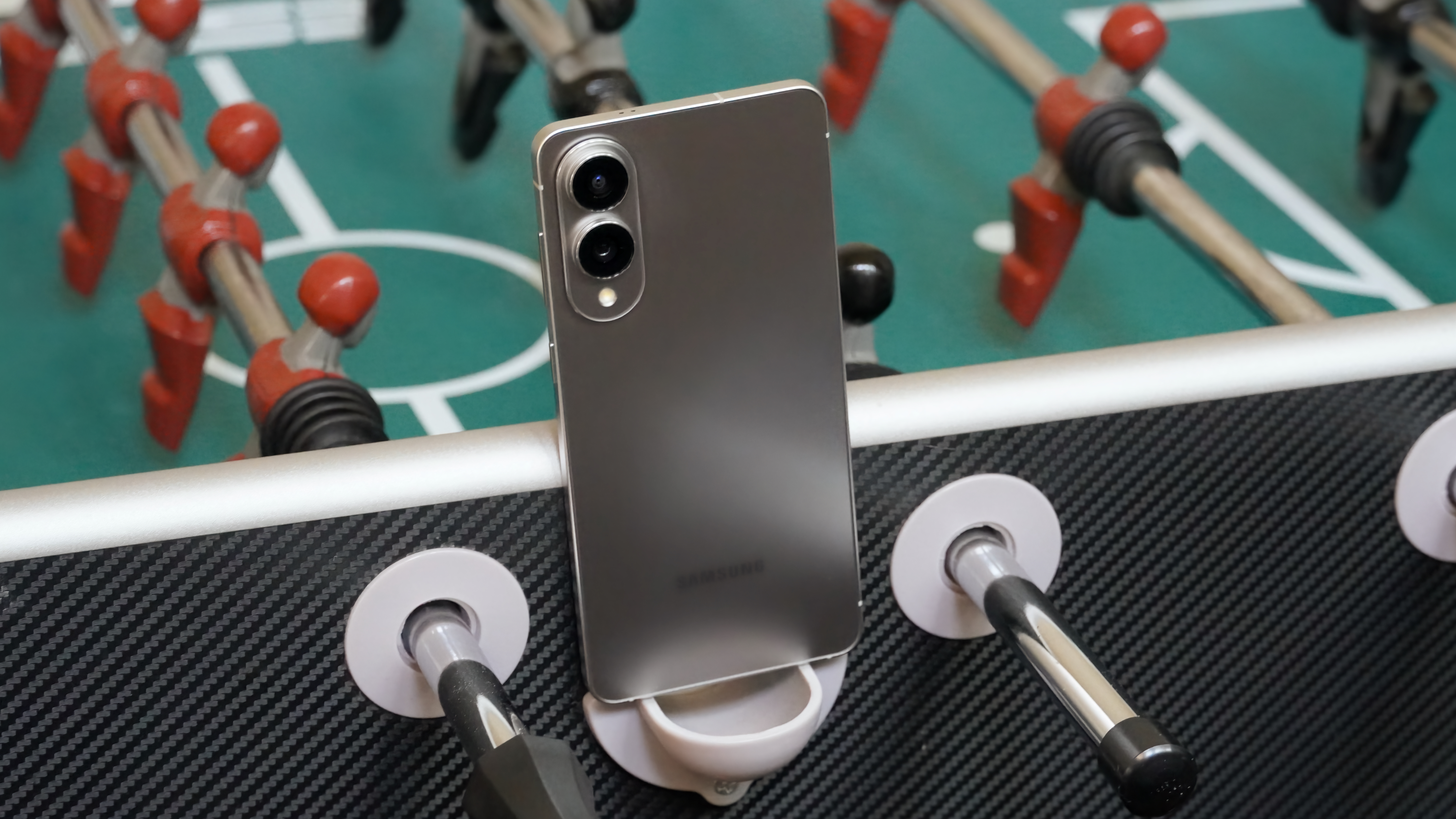
The Samsung Galaxy S25 Edge is an ultra-thin smartphone that blends some of the best part of Plus and Ultra models into a compact form factor. For instance, the Galaxy S25 Edge has the 6.7-inch screen from the Plus and the 200MP main camera sensor from the Ultra. Like the rest of the Galaxy S25 series, the Galaxy S25 Edge is powered by the Snapdragon 8 Elite for Galaxy chipset.
Battery life will always be a part of the conversation surrounding the Galaxy S25 Edge, as it sports the smallest battery capacity of any phone in this lineup. It's just 3,900mAh, which is slightly smaller than the battery inside the base Galaxy S25. This could be a problem, since the larger 6.7-inch screen in the Edge will draw as much power as the Plus while a having shorter battery life.
It's also not ideal that the Galaxy S25 Edge tops out at 25W wired charging, while the rest of the premium Galaxy S25 models can hit 45W wired charging speeds. That paints a picture of poor battery life and slow charging, a potentially-disastrous combination.
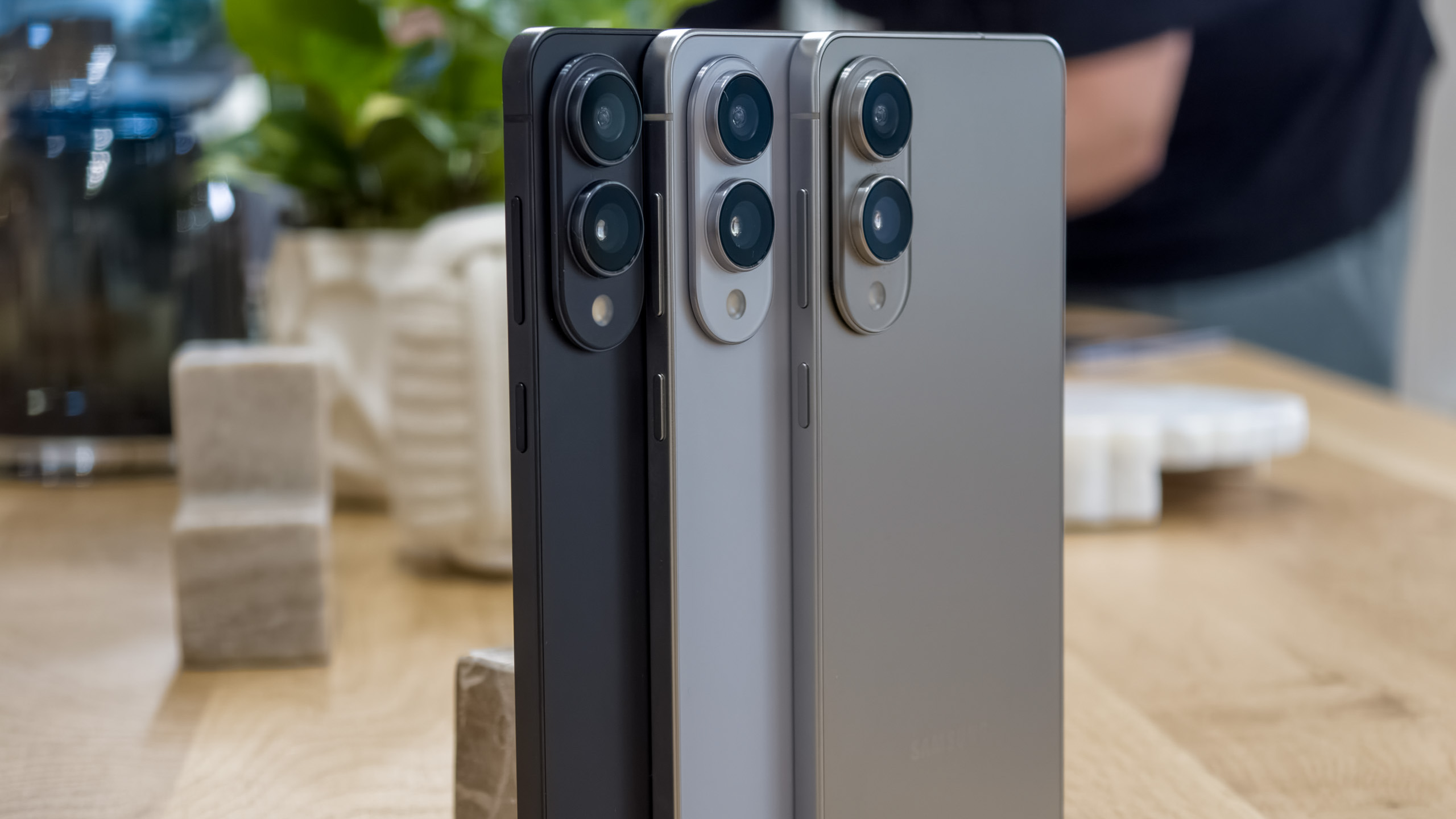
The Galaxy S25 Edge is also the only model in this generation to include a dual-camera system on the rear. That means it skips out on a telephoto lens and optical zoom, though it makes up for that with a flagship 200MP main camera. The secondary lens is a 12MP ultrawide sensor.
At just 158.2 x 75.6 x 5.8 mm, the Galaxy S25 Edge is one of the thinnest phones you can actually buy today. It's light, too, at just 163 grams — only a tick above the base Galaxy S25 despite having a much bigger screen. If you can stomach the $1,099 starting price and the battery life concerns, the Galaxy S25 Edge may be the ultra-thin phone for you.
Check out our review of the Samsung Galaxy S25 Edge and our in-depth camera tests.

- Andrew MyrickSenior Editor — Smartphones (North America), Chromebooks & Tablets
- Brady SnyderContributor
You must confirm your public display name before commenting
Please logout and then login again, you will then be prompted to enter your display name.
